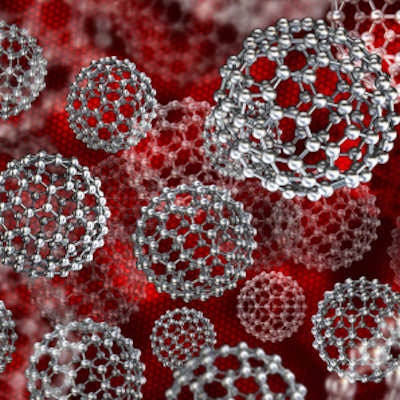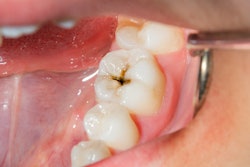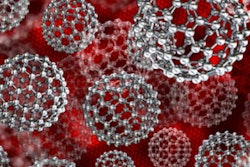
Nanoparticles have the potential to enhance almost every aspect of dentistry, from radiographs and restoratives to orthodontics and oral surgery. That's because their unique size and properties give them the ability to target and infiltrate bacteria and tissues.
Scientists are already working hard to find ways to incorporate nanoparticles into almost every aspect of dentistry, and the authors of a paper in Drug Discovery Today (August 31, 2018) highlighted some of the most exciting ways nanoparticles may be used in the future.
"Recent developments in [nanoparticles] and nanotubes in operative dentistry, endodontics, and periodontal management will have a crucial role in dentistry," wrote the authors, led by Ranjeet Bapat, BDS, MDS, a senior lecturer at the International Medical University School of Dentistry in Kuala Lumpur, Malaysia.
Here are 6 ways they believe nanoparticles can enhance the practice of dentistry
1. Stronger restoratives
One way nanoparticles are most poised to improve dentistry is their ability to create stronger and more flexible restoratives. For instance, one study found that composites with silica and silicon dioxide nanoparticles were stronger and more flexible than traditional composites. Another study found that hydroxyapatite nanoparticles are biocompatible and can be used to enhance the effect of glass ionomer.
"This improved the mechanical properties of glass ionomer cement and its bond strength with dentin," the authors wrote. "Thus, hydroxyapatite nanoparticles could be a useful addition to different restorative materials."
2. Dentures that prevent infections
Several types of nanoparticles have antibacterial and antimicrobial properties, which can be helpful for inhibiting biofilm formation, according to the authors. In particular, silver nanoparticles (AgNPs) show promise for local drug delivery, and one study found they may be able to treat denture stomatitis.
"The incorporation of AgNPs into polymers used as tissue conditioners and as denture bases has shown satisfactory outcomes as treatments for denture stomatitis," they wrote. "Thus, the addition of AgNP to dentures could prevent infections associated with mucosal tissues."
3. More efficient drug delivery
Silver nanoparticles aren't the only type of nanoparticle that show promise for delivering medication and breaking up harmful bacteria. For instance, gold nanoparticles exhibit antimicrobial, antibacterial, and antifungal properties, and certain types of these nanoparticles may be used for medical and dental applications, including wound dressings, coatings, and adhesive bandages, the authors explained.
In addition, researchers found that chitosan nanoparticles can slowly release chlorhexidine over the course of 48 hours, and polymer-based nanoparticles have been shown to release chlorhexidine for up to four weeks.
Calcium fluoride (CaF2) nanoparticles may also be able to deliver fluoride better than conventional systems. One study found that minerals might better absorb fluoride from CaF2 nanoparticles than fluoride from other sources, the authors noted.
"The nano CaF2 exhibited increased reactivity and solubility compared with its macro counterpart because of the higher solubility of nano CaF2 compared with macro CaF2, an increased amount of fluoride absorption in the apatite hypersensitivity," they wrote.
4. Clearer imaging
Nanoparticles don't just have direct effects on the oral environment; they can also be used to enhance dental imaging. This is because some types of nanoparticles coat dental surfaces, contrasting teeth and gums from other structures in radiographs and images.
For example, one study found that gold nanoparticles can be used to help visualize dental structures in 2D and 3D imaging. Other research has shown that metal iron oxide nanoparticles can be used for contrast enhancement in magnetic resonance imaging.
5. Better implants
Nanoparticles can also be used to coat implants, providing a method to both prevent bacteria formation and help with bone integration.
Silver, iron oxide, and copper nanoparticles all have antibacterial properties, which may make them an effective implant coating. Furthermore, gold nanoparticles boost the process of bonding bone to the implant.
"Given their stimulatory effect on osteoblast differentiation, gold nanoparticles can also be used as osteogenic agents," the authors wrote.
6. Remineralizing toothpastes
Perhaps one of the most exciting aspects of nanoparticles is their ability to help remineralize teeth.
One in vitro study found that hydroxyapatite nanoparticles with silica and silicon dioxide nanoparticles helped to restore demineralized dentin up to 20% of the dentin's original phosphate levels, the authors noted. The same study also found that the combination of nanoparticles decreased mineral separation.
"Demineralized dentin infiltrated with silica and silicon dioxide nanoparticles appeared to encourage the heterogeneous mineralization of the dentin collagen matrix following exposure to an artificial saliva solution," they wrote.
One application of this technology could be the creation of remineralizing toothpastes, according to the authors. A couple of in vitro studies found that infusing toothpaste with hydroxyapatite nanoparticles may be able to boost a toothpaste's remineralization and desensitization properties.
"Increased remineralization of dentin and enamel was observed with toothpastes containing hydroxyapatite nanoparticles compared with amine fluoride toothpastes," they wrote. "Thus, the authors speculated that nanohydroxyapatite can promote remineralization."



















